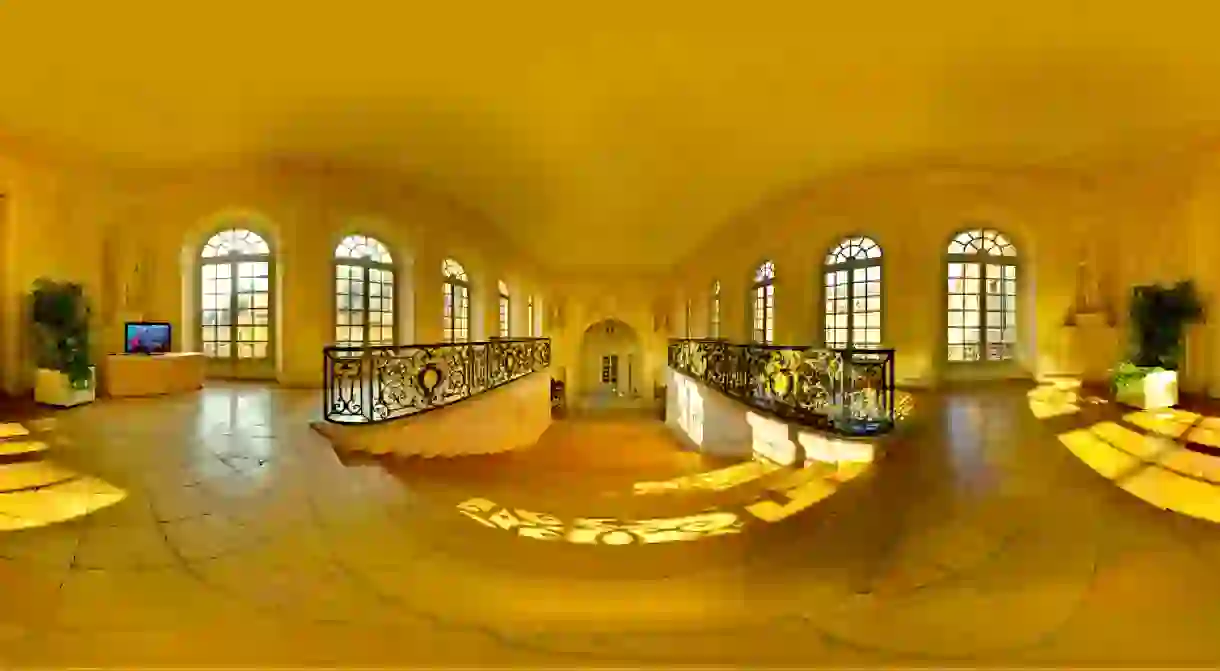The Most Beautiful Buildings in Dijon

The streets of Dijon are an invitation to lose yourself in endless hours of relaxed flânerie, taking your time to stop and enjoy the wonderful restaurants and boutiques. There is an unparalleled number of magnificent treasures of medieval architecture, but also bold examples of contemporary design.
Palais des Ducs
This is the motherlode of beautiful architecture right in the heart of Dijon, where you can easily spend an entire day of discovery. Rather than one building, it is a compound that dates back to the Middle Ages and has been successively added to – very successfully so. The wings that encompass the old medieval ducal headquarters are fascinating, notably the ducal kitchens and the great tower of Philippe Le Bon, which has a viewing platform with a panoramic view of the city – well worth the climb. The sensational Musée des Beaux-Arts, tourism office and City Hall all have their home in the palace.

Hôtel des Vosges
Building work started around 1614 for Etienne Bouhier, Councilor of the Parliament of Burgundy, in one of the most ornate mansions built in the 17th century in France. The majestic porch opens onto a courtyard with an unbelievable carved portico. The classical proportions are reminiscent of the refinement of the Italian Renaissance. Originally occupied by the influential Vogüé family, it was later bought by the city and still houses some of its administrative offices.

Opéra de Dijon
The handsome Grand Théâtre de Dijon was inaugurated on November 4, 1828. It was designed by Jacques Cellerier and Simon Vallot in the Neo-classical style with an interior modelled after Italian opera houses. The theatre has been renovated and is still in full operation, with a seating capacity of just under 700 concert-goers.

Maison des Cariatides
While there are many astonishing examples of medieval homes in Dijon, la Maison des Cariatides is a marvel unto itself. The mansion was built around 1603 by the architect of the Pouffier family, who were wealthy merchants and were keen to communicate their social standing by way of an impressive residence. The style of this facade has been copied innumerable times, with its elegant Atlantes and Cariatides crowned by cauldrons brimming with flowers.

Consortium
Le Consortium is a thriving contemporary art center based in Dijon and designed by the renowned Japanese architect Shigeru Ban and French architect Jean de Gastines. The design wished to echo the vision of the founders of the art center, to become a place for creation and exchange, and a catalyst for new concepts and the meeting of free minds.

The covered market
As markets go, the tendency is to focus on the stalls and the goods on display, but here the eye travels up and around. Markets have always been strategic meeting places in the heart of the city, and Dijon wanted to make a grand statement. The construction of the Halles de Dijon was undertaken in 1868 after several years of debates. With a total height of 13 meters, the building covers 4400m² with four pavilions articulated around two ‘streets’. The layout of the roof is strongly inspired by that of the central Les Halles of Paris, which was razed to the ground to give way to a modern building. Luckily for Dijon, Les Halles lives on with its airy louvres and skylights.

Musée Magnin
The hôtel Lantin, a 17th-century hôtel particulier in the historical district close to the Palais des Ducs, was the home of Maurice Magnin and his sister Jeanne. As avid collectors, the siblings amassed over 2,000 works of art, artifacts and furniture, which they bequeathed to the state in 1938 along with their home. In accordance with the donors’ wishes, the museum has retained its characters as an amateur’s curiosity cabinet and private home.

Eglise de Notre Dame
The Church of Notre-Dame of Dijon is a masterpiece of 13th-century Gothic architecture, with its earliest structures dating back to 1230. The architectural features include two symbols of Dijon: the jacquemart ‘bell ringers’ and the owl (rub its belly with your left hand for good luck). The most striking element, however, is the atypical western facade adorned with more than 50 grotesques, one more peculiar than the next, representing human figures, animals and mythical monsters.

Auditorium
The decidedly contemporary building, in the Clemenceau district of Dijon, was inaugurated on June 20, 1998. It is part of the Dijon Opera, together with the 19th-century Grande Theatre. Designed by architects Arquitectonica and Bougeault-Walgenwitz, the building is not only visually impressive, it also renowned as one of the best in Europe in terms of acoustics.

Ministere de Justice
Erected in the 16th century, the courthouse has an impressive gabled Renaissance facade. The columned entrance and the richly decorated doors are jaw-dropping, as well as the sumptuous interior and the golden chamber, which serves today as the seat of the Court of Appeals that is still emblazoned with the arms of King Francis I.














